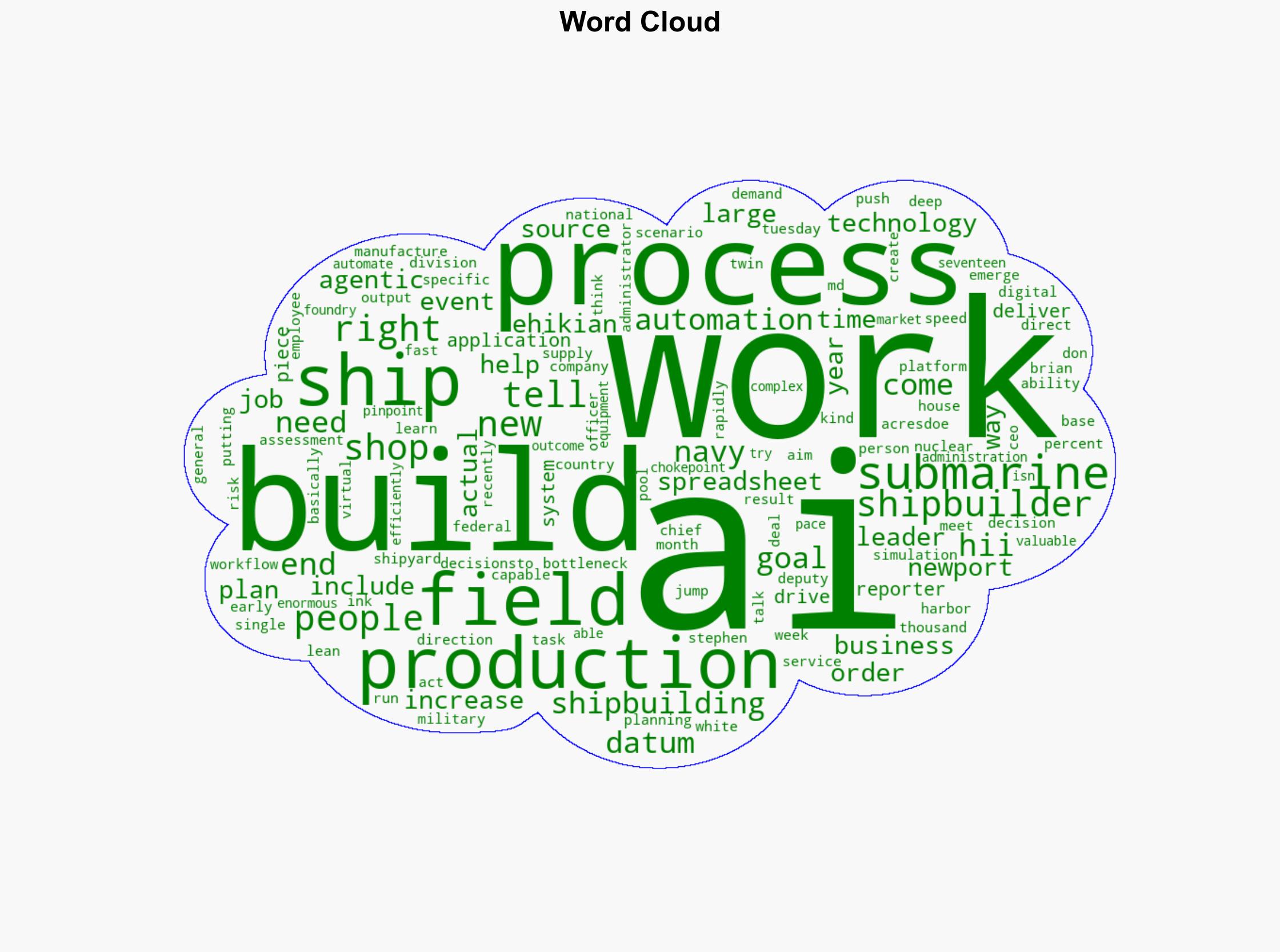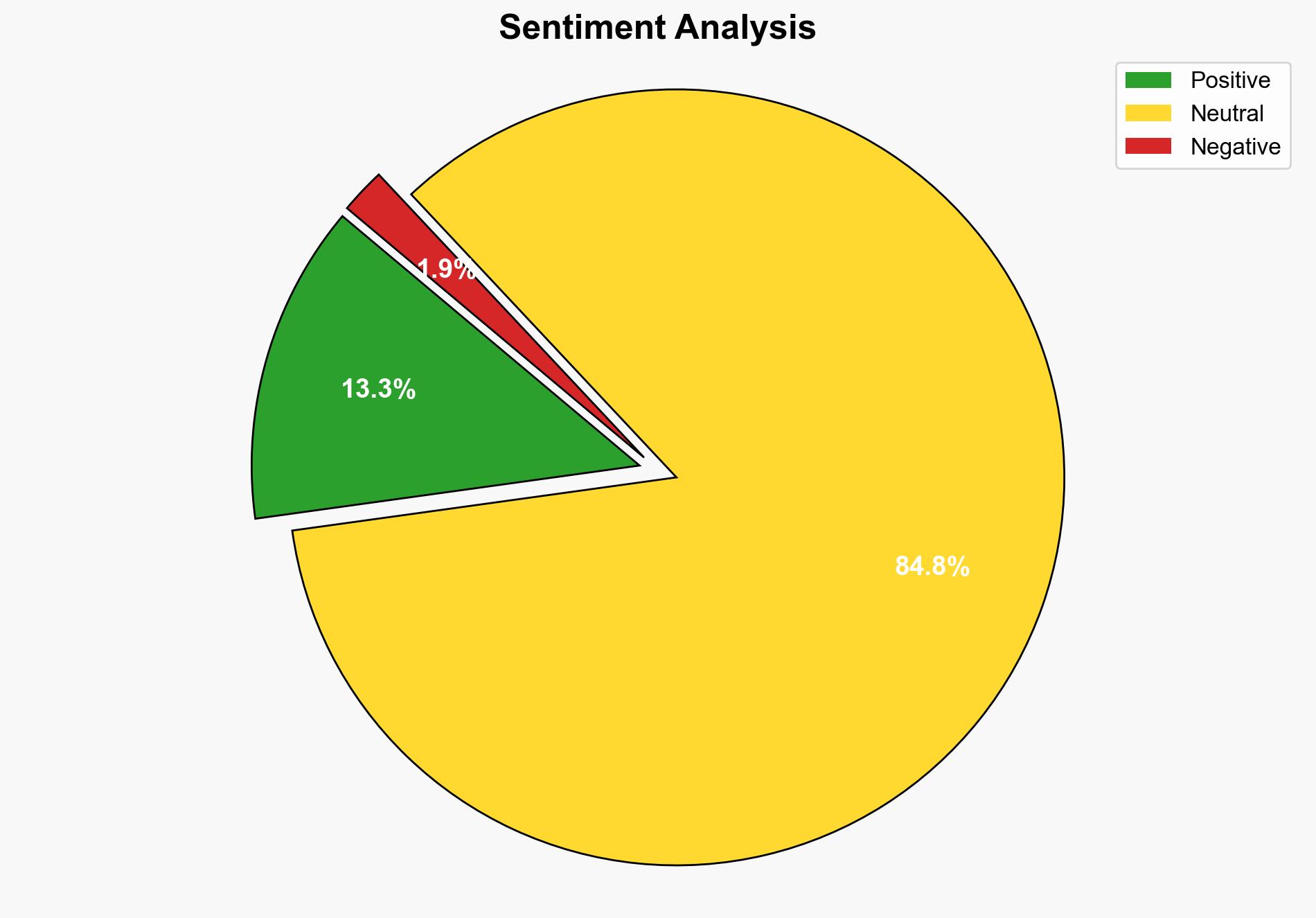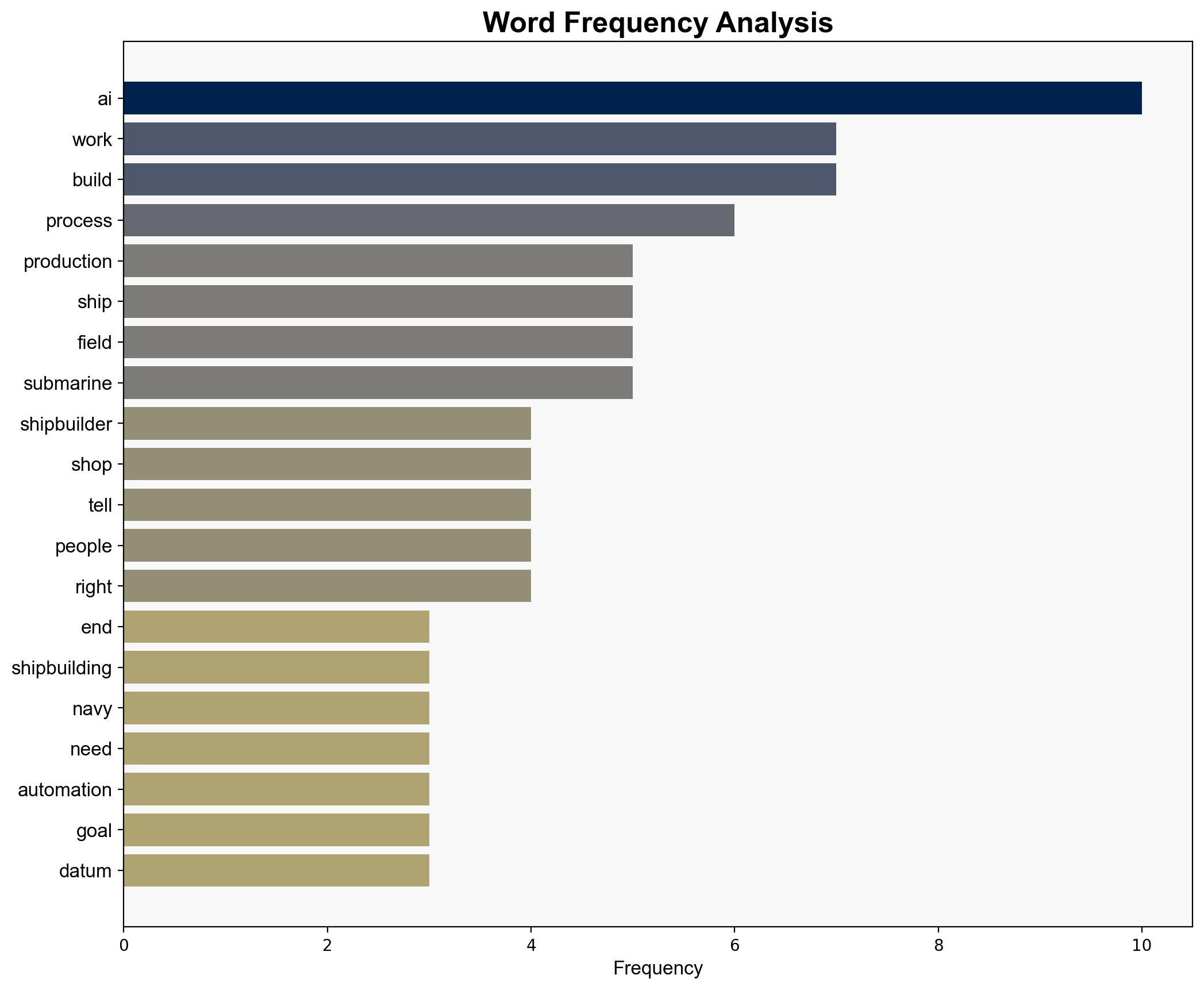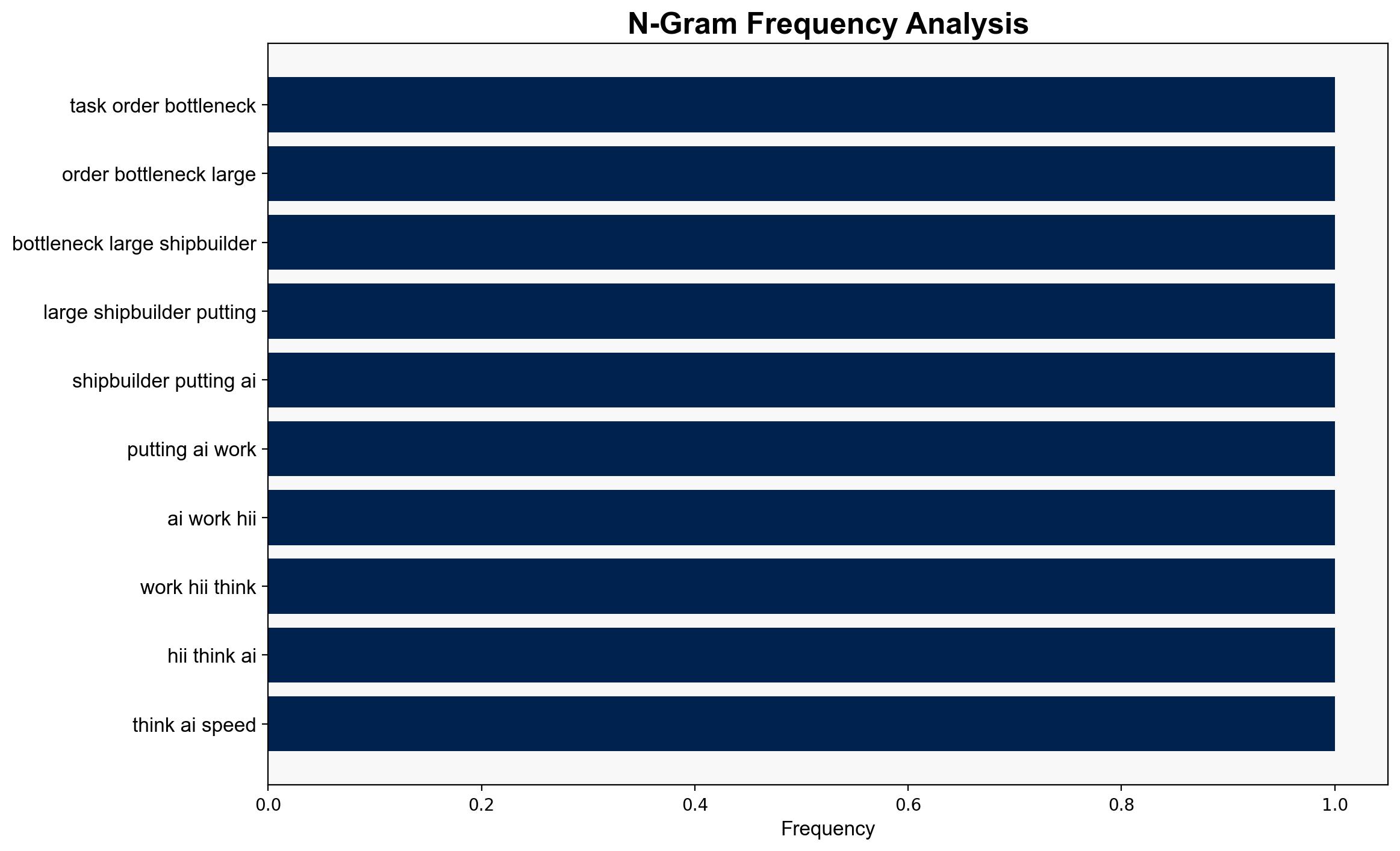Task orders and bottlenecks how the largest US shipbuilder is putting AI to work – Defense One
Published on: 2025-09-10
Intelligence Report: Task orders and bottlenecks how the largest US shipbuilder is putting AI to work – Defense One
1. BLUF (Bottom Line Up Front)
The integration of AI by the largest US shipbuilder, HII, aims to streamline production and address bottlenecks, particularly in submarine manufacturing. The most supported hypothesis suggests that AI will enhance efficiency and meet increased production demands. Confidence level is moderate due to potential workforce resistance and technological adaptation challenges. Recommended action is to closely monitor AI implementation and workforce adaptation, ensuring alignment with production goals.
2. Competing Hypotheses
Hypothesis 1: AI integration will significantly improve production efficiency and meet the Navy’s demand for faster submarine production. This hypothesis is supported by the strategic use of AI for process automation and decision-making, as well as the creation of digital twins for simulation and risk assessment.
Hypothesis 2: AI integration may face significant challenges, such as workforce resistance and technological limitations, which could hinder the anticipated improvements in production efficiency. This hypothesis considers potential resistance to change and the complexity of integrating AI into existing processes.
3. Key Assumptions and Red Flags
Assumptions:
– AI technology is mature enough to handle complex shipbuilding tasks.
– Workforce will adapt to AI-driven processes without significant resistance.
– AI can effectively integrate disparate data sources to optimize production.
Red Flags:
– Potential workforce resistance to AI-driven changes.
– Technological challenges in integrating AI with existing systems.
– Over-reliance on AI without sufficient human oversight.
4. Implications and Strategic Risks
The successful integration of AI could set a precedent for other defense contractors, potentially leading to widespread adoption across the industry. However, failure to address workforce adaptation and technological integration could result in production delays and increased costs. Geopolitically, enhanced submarine production capabilities could shift naval power dynamics, influencing regional security environments.
5. Recommendations and Outlook
- Monitor AI implementation progress and workforce adaptation closely.
- Develop training programs to facilitate workforce transition to AI-driven processes.
- Scenario-based projections:
- Best Case: AI integration leads to a 20% increase in production efficiency, meeting Navy demands.
- Worst Case: Resistance and technical failures result in production delays and increased costs.
- Most Likely: Moderate efficiency gains with gradual workforce adaptation and technological adjustments.
6. Key Individuals and Entities
– Brian Field
– Stephen Ehikian
– HII (Huntington Ingalls Industries)
– Newport News Shipbuilding
7. Thematic Tags
national security threats, cybersecurity, defense technology, workforce adaptation




